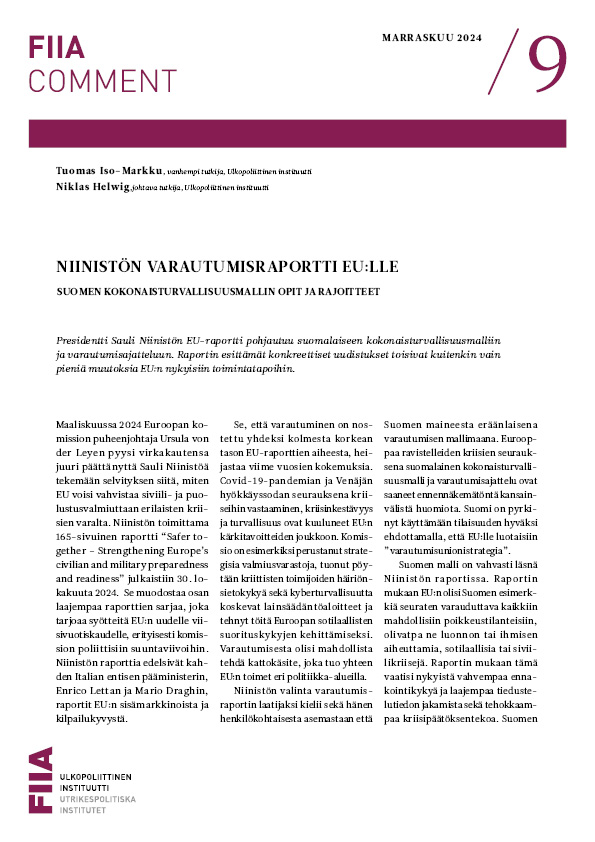The Lisbon Treaty anchored the EU development policy at the forefront of the Union’s external relations. For the development policy, this provides an opportunity to improve its own role and functions in relation to its own targets, as well as in relation to the Common Foreign and Security Policy and the trade policy.
To take this opportunity, the EU development policy actors need to find a means and a vision in the context of the changing institutional landscape and the EU development policy overhaul.
A stronger EU development policy as a part of the external relations equation depends on the EU development actors’ capability to act jointly in the area of shared competency, and to define the policy’s focus and content vis-à-vis the other branches of the EU’s external relations.
This is of utmost importance in the new institutional context that was formed to implement the Lisbon Treaty. Most notably, the European External Action Service (EEAS) risks inheriting the previous organizational challenges of the EU development policy and creating new ones.
The EU Commission proposal ‘Agenda for Change’ (October 2011) still passes up the opportunity to present a strong vision for the development policy in the EU’s external relations along the lines of the Lisbon Treaty. While enhancing the common agenda for the CFSP and the development policy is conducive to development policy objectives, it is alarming that the policy proposal turns a blind eye to the role of the EU trade policy.








